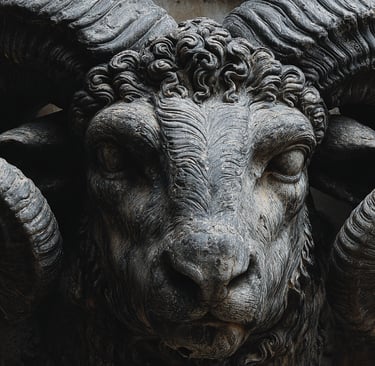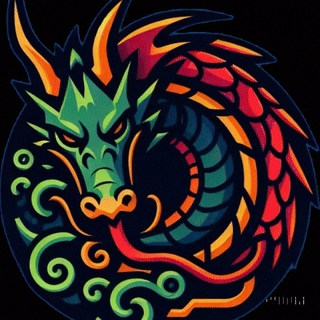Greek Influence and Roman Identity
The relationship between Greek and Roman mythology represents one of history's most complex cultural exchanges. Far from simply copying Greek religious practices, Romans engaged in a sophisticated process of adoption, adaptation, and transformation that ultimately created something distinctly Roman while acknowledging Greek precedents. Understanding this relationship is crucial to grasping how Roman mythology developed its unique character.
The Encounter with Greek Culture
Roman contact with Greek culture began early and intensified over centuries. Greek colonies in southern Italy (Magna Graecia) established direct contact with expanding Roman territory by the 4th century BCE. These Greek cities possessed elaborate mythological traditions, sophisticated literary works, and artistic representations of gods that far exceeded anything in early Roman culture.
When Romans encountered Greek religious practices, they faced a civilization that had already developed complex mythological narratives, anthropomorphic representations of deities, and literary traditions spanning centuries. Homer's epics, Greek tragic dramas, and philosophical works presented gods as fully realized personalities with detailed backstories, family relationships, and emotional complexity that early Roman numina and agricultural deities lacked.
This encounter forced Romans to confront fundamental questions about their own religious identity. Should they abandon their ancestral practices in favor of more sophisticated Greek models? Could they maintain Roman religious authority while adopting Greek cultural forms? How could they honor both traditions without losing their distinctive character?
The Process of Interpretatio Romana
Romans developed interpretatio romana (Roman interpretation) as their primary method for integrating Greek religious concepts while maintaining Roman religious authority. This process involved identifying Greek deities with existing Roman gods, creating composite figures that honored both traditions while remaining fundamentally Roman in character.
Jupiter and Zeus provide the clearest example of this process. While both gods ruled the heavens and wielded thunderbolts, Roman Jupiter maintained his distinctive role as protector of the Roman state and guardian of oaths and treaties. Greek Zeus's numerous love affairs and conflicts with other gods were acknowledged in Roman literature, but Jupiter's primary identity remained focused on cosmic order and political authority.
Mars and Ares demonstrate how Romans transformed Greek divine personalities to fit Roman values. While Greek Ares was often portrayed as brutal, cowardly, and generally disliked by other gods, Roman Mars became a noble father figure who combined military prowess with agricultural fertility. Romans emphasized Mars's role as ancestor of their people through Romulus and Remus, giving him a dignity that Greek Ares lacked.
Venus and Aphrodite underwent perhaps the most significant transformation. While Greek Aphrodite was primarily associated with sexual passion and romantic intrigue, Roman Venus became a symbol of divine ancestry and imperial legitimacy. The Julian family claimed descent from Venus through Aeneas, making her worship a matter of dynastic pride rather than merely romantic devotion.
Selective Adoption and Roman Innovation
Romans demonstrated remarkable selectivity in choosing which Greek religious elements to adopt and which to modify or reject. This selectivity reflected Roman values and practical concerns rather than arbitrary cultural preferences.
Mythological narratives were adopted selectively, with Romans favoring stories that emphasized duty, sacrifice, and collective benefit over individual heroism or divine caprice. The Roman version of the Trojan War cycle focused on Aeneas's journey to Italy and his establishment of Roman ancestry rather than on Greek heroes' individual glory.
Artistic representations followed Greek models in technique while maintaining Roman thematic preferences. Roman temple sculptures and frescoes depicted Greek mythological scenes but often emphasized different moments or aspects that supported Roman values. Roman artists frequently chose to portray gods in their roles as civic protectors rather than as participants in romantic or comedic episodes.
Religious practices integrated Greek elements while maintaining distinctly Roman ritual procedures. Romans adopted Greek temple architecture and sacrificial practices but retained their emphasis on precise ritual performance, contractual relationships with deities, and the connection between divine favor and state prosperity.
Resistance and Cultural Anxiety
The wholesale adoption of Greek religious culture created significant anxiety among Romans who feared losing their cultural identity and religious authority. This anxiety manifested in various forms of resistance and attempts to maintain Roman distinctiveness.
Conservative religious leaders like Cato the Elder argued that Greek religious practices would weaken Roman moral fiber and military discipline. They warned that Greek emphasis on individual expression and emotional complexity would undermine Roman virtues of duty, discipline, and collective sacrifice.
Political figures worried that adopting Greek religious practices would diminish Roman claims to divine favor and political legitimacy. If Roman gods were merely versions of Greek deities, what special relationship existed between the gods and the Roman people?
Cultural critics argued that Greek mythological complexity was unnecessary and potentially corrupting. They preferred the simple, practical relationship between Romans and their gods to the elaborate psychological dramas of Greek divine families.
The Augustan Synthesis
The reign of Augustus (27 BCE - 14 CE) marked the culmination of centuries of Greek-Roman religious synthesis. Augustus and his cultural advisors, particularly the poet Virgil, created a masterful integration of Greek literary sophistication with Roman political and religious authority.
Virgil's Aeneid represents the supreme achievement of this synthesis. The epic employed Greek literary techniques and acknowledged Greek mythological precedents while creating a distinctly Roman narrative that justified Roman imperial expansion and celebrated Roman values. Aeneas embodied the Roman ideal of duty (pietas) rather than the individual heroism celebrated in Greek epics.
Augustan religious revival combined Greek artistic sophistication with renewed emphasis on traditional Roman religious practices. Augustus rebuilt ancient temples, revived old festivals, and emphasized his role as pontifex maximus while commissioning artwork that depicted traditional Roman deities in Greek artistic styles.
Imperial cult development created new religious practices that honored the emperor and his family while maintaining connections to both Greek and Roman divine traditions. Augustus was associated with Apollo (a Greek import) while his wife Livia was connected to traditional Roman goddesses like Ceres and Vesta.
Distinctive Roman Characteristics Preserved
Despite extensive Greek influence, Roman mythology maintained several distinctive characteristics that differentiated it from its Greek models:
Civic focus remained paramount in Roman religious thinking. While Greek gods might favor individual heroes or cities, Roman gods were understood to have special relationships with the Roman state itself. Religious practices were evaluated based on their contribution to Roman collective welfare rather than individual spiritual development.
Historical consciousness distinguished Roman mythology from Greek traditions. Romans insisted that their myths represented actual historical events rather than symbolic or allegorical stories. This historical approach gave Roman mythology its political dimension and practical application.
Practical application continued to characterize Roman religious practices. Even when adopting elaborate Greek mythological narratives, Romans maintained their emphasis on precise ritual performance, correct sacrificial procedures, and measurable divine responses to human actions.
Legal thinking influenced how Romans understood divine relationships. Roman gods were bound by contracts and agreements just as human legal relationships were governed by law. This legalistic approach created more predictable divine-human relationships than the capricious behavior often attributed to Greek gods.
The Question of Cultural Authenticity
The extensive Greek influence on Roman mythology has led some scholars to question whether Roman mythology possessed authentic cultural content or merely represented Greek mythology in Roman dress. This question misunderstands the sophisticated cultural work that Romans performed in adapting Greek materials to Roman needs.
Cultural creativity was demonstrated in how Romans transformed Greek religious concepts to serve Roman social and political purposes. The process of adaptation required sophisticated understanding of both traditions and creative synthesis of apparently contradictory elements.
Religious innovation continued throughout Roman history as Romans encountered new cultures and religious traditions. The capacity for religious adaptation that Romans demonstrated with Greek culture served them well when integrating Celtic, Germanic, Egyptian, and Near Eastern religious practices.
Identity formation through religious synthesis became a distinctly Roman cultural practice. Rather than seeing religious borrowing as cultural weakness, Romans developed it into a sophisticated method for creating unity among diverse populations while maintaining Roman leadership.
Legacy and Influence
The Roman synthesis of Greek religious traditions created the mythological system that would influence Western culture for centuries. When Christianity became the Roman Empire's official religion, it inherited this synthetic approach to cultural integration. Later European cultures would look to Roman models when encountering their own religious and cultural diversity.
The Roman example demonstrates that successful cultural adaptation requires more than mere copying. It demands creative transformation that honors both traditions while creating something new that serves contemporary needs. Roman mythology succeeded not because it perfectly preserved either Greek or early Roman traditions, but because it created a new synthesis that proved more durable and influential than either of its sources.
Understanding the Greek influence on Roman identity helps us appreciate both the complexity of ancient cultural exchange and the creative potential that emerges when different traditions encounter each other with respect, selectivity, and innovative adaptation.


480-366-3550 (Domain Sales)
© SDBEST LLC, 2025. All rights reserved.
Sponsorship Disclosure
Terms of Service
